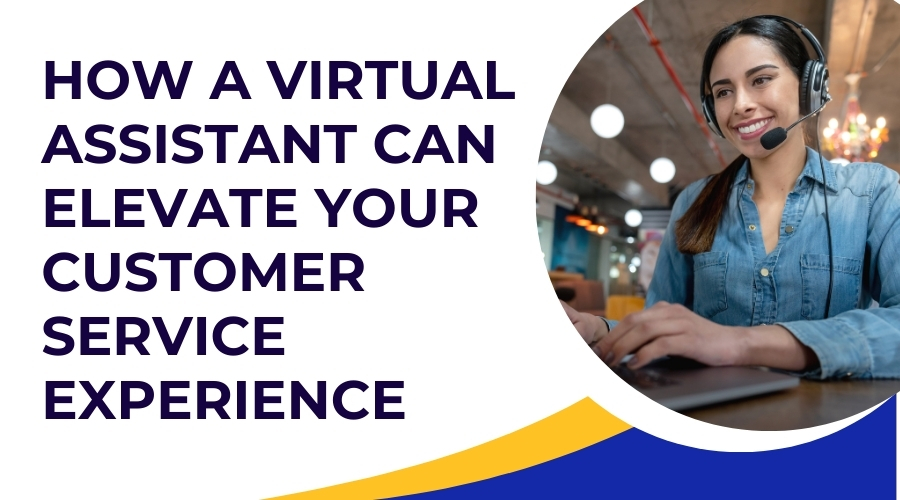One of the key advantages of using virtual assistants is their ability to operate around the clock. Unlike human agents, virtual assistants can provide continuous support, ensuring that customers receive timely assistance regardless of time zones or business hours. This 24/7 availability can significantly enhance the customer experience by offering immediate responses to inquiries and resolving issues as they arise.
Additionally, virtual assistants can be programmed to use data and analytics to personalize interactions. By leveraging customer information, they can tailor responses to individual needs, creating a more engaging and relevant experience. This level of personalization can foster customer loyalty and lead to repeat business.
As companies increasingly adopt virtual assistants, it’s important to understand their role and the benefits they bring to customer service operations. With the right implementation, virtual assistants can transform the way businesses interact with their customers.
1. 24/7 Availability: Customers today expect support around the clock. Virtual assistants can provide support, ensuring that inquiries are addressed promptly, regardless of time zones.
2. Cost-Effective Scalability: Hiring full-time, in-house staff for customer service can be costly. Virtual assistants offer a flexible and scalable solution, allowing businesses to adjust support levels based on demand without the overhead costs associated with traditional employees.
3. Enhanced Efficiency: Virtual assistants can simultaneously handle a large volume of inquiries, reducing wait times and improving overall customer satisfaction.
4. Personalized Customer Interactions: By gathering information about customers’ preferences and behaviors, virtual assistants can provide tailored recommendations and suggestions, leading to increased customer satisfaction and loyalty.
Additionally, virtual assistants work remotely, eliminating the costs related to office supplies, equipment, and workspace maintenance. Businesses can also avoid the overhead costs tied to employee training and onboarding since virtual assistants are often already proficient in their specialized tasks.
Implementing virtual assistants in your business requires careful planning and collaboration. Start with a comprehensive assessment to identify tasks that can be automated, such as handling inquiries, providing product information, or troubleshooting issues. Collaborate with your IT and customer service teams to ensure the virtual assistant integrates smoothly with your existing systems, like Customer Relationship Management (CRM) software. This will enable the assistant to access necessary data and deliver accurate responses.
Set clear guidelines for the virtual assistant’s role to manage customer expectations effectively. Define the scope of tasks it will handle and establish protocols for escalations that require human intervention. Regular monitoring and performance evaluations are crucial for ensuring the virtual assistant meets your customer service objectives. Gathering customer feedback can provide valuable insights for refining its functions and improving overall performance.
Training and development are also key components. Ensure the virtual assistant is well-versed in your business’s products, services, and customer service protocols. Ongoing training is essential to adapt to evolving customer needs and incorporate new technologies. Regular updates and maintenance will keep the virtual assistant effective and responsive.
Choosing the right provider is equally important. Look for a provider that offers customized solutions tailored to your industry. A good provider will understand the unique demands of your business and offer robust support to ensure successful implementation.
Virtual assistants can revolutionize customer interactions by leveraging data to provide personalized and efficient responses. They use customer information to tailor their communication, making each interaction more engaging and relevant. This approach not only boosts customer satisfaction but also encourages loyalty and repeat business. Virtual assistants are equipped to handle high volumes of inquiries simultaneously, ensuring customers receive prompt and consistent responses without long wait times. This efficiency allows human agents to concentrate on more complex and nuanced customer issues, improving overall service quality. Additionally, virtual assistants can track and analyze customer interactions to identify patterns and preferences, enabling businesses to continuously refine their customer service strategies.
Ensuring virtual assistants integrate seamlessly with your current systems is vital for a smooth transition and successful implementation. One of the most critical aspects of this integration is compatibility with Customer Relationship Management (CRM) software. When virtual assistants can access and update CRM data, they deliver more accurate and personalized responses, significantly enhancing the customer experience. This compatibility allows for real-time data synchronization, ensuring that customer interactions are informed by the most up-to-date information available.
Another important consideration is the integration with other business tools and platforms, such as helpdesk software, e-commerce systems, and communication channels. This ensures a cohesive workflow where virtual assistants can function efficiently alongside human agents and other automated systems. For example, integrating virtual assistants with helpdesk software can streamline ticketing processes, automatically categorizing and prioritizing issues based on predefined criteria.
APIs (Application Programming Interfaces) play a crucial role in facilitating these integrations. They enable virtual assistants to communicate with various systems, accessing the data needed to perform tasks and deliver responses. Ensure that your virtual assistant provider offers robust API support and documentation to ease the integration process.
Security is another key aspect to consider when integrating virtual assistants with existing systems. Ensure that data transfer protocols are secure to protect sensitive customer information. Compliance with industry standards and regulations, such as GDPR or CCPA, is also essential for maintaining customer trust and avoiding legal complications.
Lastly, regular testing and monitoring are crucial to ensure that the integrations work as expected. This helps identify and resolve any issues promptly, maintaining the efficiency and reliability of the virtual assistant in your customer service operations.
For a successful virtual assistant deployment, a robust training and development program is essential. Start by familiarizing virtual assistants with your company’s products, services, and customer service protocols to ensure they can handle inquiries accurately. Implement a comprehensive onboarding process that includes detailed training modules and hands-on practice sessions to prepare the virtual assistant for real-world interactions.
Ongoing education is equally important to keep the virtual assistant aligned with evolving customer expectations and technological advancements. Regularly update the virtual assistant’s knowledge base to reflect the latest information about your offerings and industry trends. This continual learning process can be facilitated through scheduled training sessions, interactive workshops, and access to updated resources.
Ongoing education is equally important to keep the virtual assistant aligned with evolving customer expectations and technological advancements. Regularly update Performance monitoring is another critical aspect of training and development. Utilize analytics and customer feedback to evaluate the virtual assistant’s effectiveness. Identify areas where performance can be improved and provide targeted training to address these gaps. Metrics such as response time, customer satisfaction, and issue resolution rates can offer valuable insights into the virtual assistant’s performance.virtual assistant’s knowledge base to reflect the latest information about your offerings and industry trends. This continual learning process can be facilitated through scheduled training sessions, interactive workshops, and access to updated resources.
Collaboration between IT and customer service teams is vital for successful training and development. These departments can work together to ensure that the virtual assistant is integrated smoothly into existing systems and workflows. Technical support from IT can help troubleshoot any issues that arise, while input from customer service can ensure that the virtual assistant meets customer expectations.
Ultimately, a well-rounded training and development program will keep your virtual assistant efficient, responsive, and aligned with your business goals, providing a consistent and high-quality customer service experience.
The future of virtual assistants in customer service is poised for remarkable advancements. With continuous improvements in artificial intelligence (AI) and machine learning, virtual assistants will become more intuitive and capable of understanding customer needs with greater precision. Enhanced natural language processing will allow these digital assistants to engage in more human-like conversations, making interactions feel smoother and more personalized.
As AI technologies develop, virtual assistants will be able to handle more complex tasks, moving beyond simple queries to providing sophisticated support and problem-solving. They will be able to learn from previous interactions, adapting their responses to better meet individual customer preferences and behaviors. This will lead to a more proactive approach in customer service, where virtual assistants can anticipate needs and offer solutions before issues even arise.
Integration with other emerging technologies, such as the Internet of Things (IoT), will further expand the capabilities of virtual assistants. For instance, in a smart home setting, a virtual assistant could troubleshoot connected devices and provide real-time updates on their status, all while communicating seamlessly with the user.
Another area of potential growth is in multi-language support. Advanced AI will enable virtual assistants to communicate fluently in various languages, making them invaluable in global markets. This will allow businesses to offer consistent, high-quality customer service regardless of the customer’s location or native language.
Additionally, ethical considerations and data privacy will become increasingly important as virtual assistants evolve. Companies will need to ensure that their virtual assistants adhere to stringent security measures and comply with regulations to protect customer information. As these digital tools become more sophisticated, they will also become more critical in maintaining and enhancing customer trust.
Additionally, virtual assistants work remotely, eliminating the costs related to office supplies, equipment, and workspace maintenance. Businesses can also avoid the overhead costs tied to employee training and onboarding since virtual assistants are often already proficient in their specialized tasks.
To maximize the benefits of virtual assistants in customer service:
• Foster Clear Communication: Establish open lines of communication between your virtual assistant and your in-house team to ensure alignment and address any issues promptly.
• Monitor Performance: Regularly assess the performance of your virtual assistant through customer feedback and key performance indicators. Use this data to make informed adjustments and improvements.
• Stay Adaptable: Be prepared to adapt your customer service strategies based on evolving customer preferences and feedback. Virtual assistants should be flexible and responsive to changing customer needs.
Integrating virtual assistants into your customer service strategy can significantly enhance the customer experience, leading to increased satisfaction and loyalty. At B2B Virtual Assistants, we are committed to providing skilled professionals who can seamlessly integrate into your operations and elevate your customer service to new heights.







